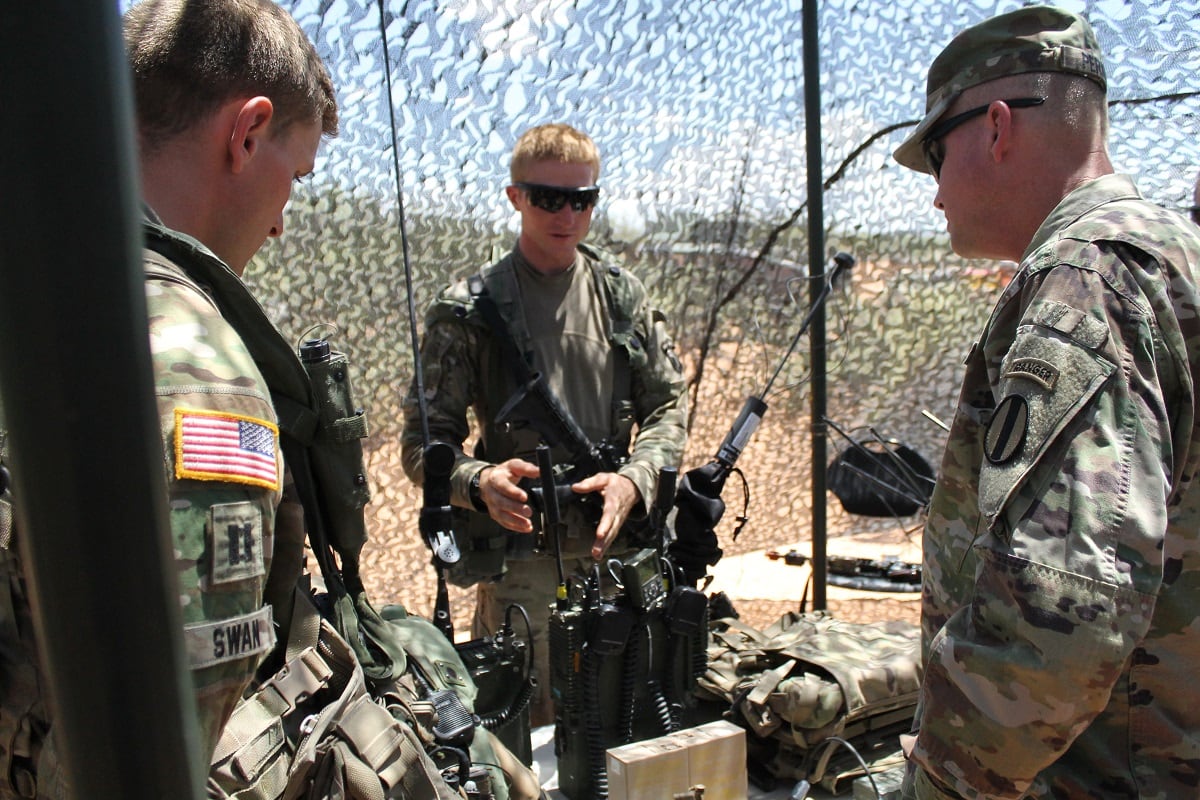Engineers at the U.S. Army Research Laboratory at Aberdeen Proving Ground, Maryland, are toying with ways to lighten troops’ loads in 21st century combat.
But don’t worry — it’s still an ”early stage prototype device,” researchers said in a new video released last week to promote the project.
“Third Arm is a wearable, passive, stabilizing device for the dismounted soldier,” Dan Baechle, a mechanical engineer at Army Research Laboratory, said in the video.
Weight is a sensitive subject for ground troops, many of whom likely see the Third Arm device and assume — rightly so, at this point — that it’s just more cumbersome gear added to their kit.
But Baechle said part of their intention is to learn more about the cost-reward dynamic of added weight and increased utility.
“What we want to look at here is [whether] there is a trade-off between potentially added weight and improved lethality, improved survivability,” he said.
“It can help stabilize the weapon and take the load off of their arms,” Baechle added. “It’s made from composite materials to make it as light as possible, but also to ensure the range of motion that Soldiers need.”
Third Arm weighs less than four pounds, and has been tested with the M249 and M240B machine guns.
Baechle said that the device took the full 27 pounds of weight from the M240B off a soldier’s arms when tested.
In 2017, the Army Research Laboratory conducted a pilot study of active-duty troops using Third Arm in live-fire tests. While the results showed the device did improve marksmanship, reduced arm fatigue and muscle activation for some troops, there were notable complaints.
RELATED

Some of the soldiers who helped test the device complained that the previous version was impossible to put into the prone position. The new prototype, however, is more maneuverable and can be brought down into prone, according to a press release.
"We're still refining the device,” Baechle said, adding that they’re “starting to look at heavier weapons.”
The Army Modernization Priorities, which Third Arm falls under, include "soldier lethality that spans all fundamentals — shooting, moving, communicating, protecting and sustaining," according to the release.
The Army is also interested in developing load-bearing exoskeletons.
"It falls in line with the direction that the Army wants to be heading in the future," Baechle said. "We get comments from Soldiers who tell us different things about the way it feels on their body .. .about the way it redistributes the load. Some like it, some give us tips about the ways it could be improved, and we're using that input to improve the device and improve the design so that it not only works well, but it also feels good."
Kyle Rempfer was an editor and reporter who has covered combat operations, criminal cases, foreign military assistance and training accidents. Before entering journalism, Kyle served in U.S. Air Force Special Tactics and deployed in 2014 to Paktika Province, Afghanistan, and Baghdad, Iraq.




